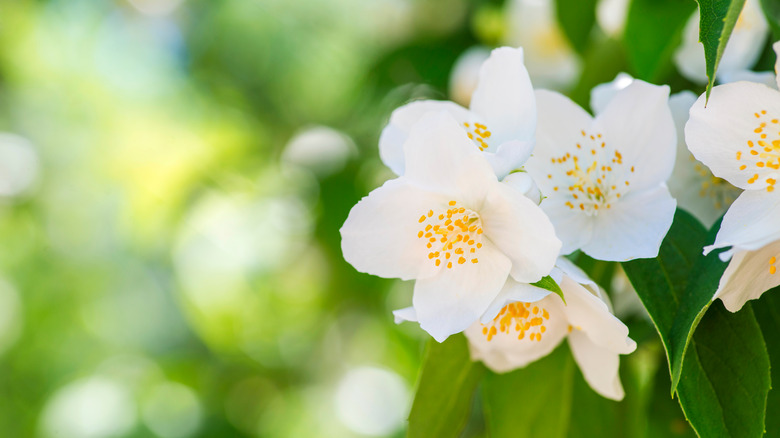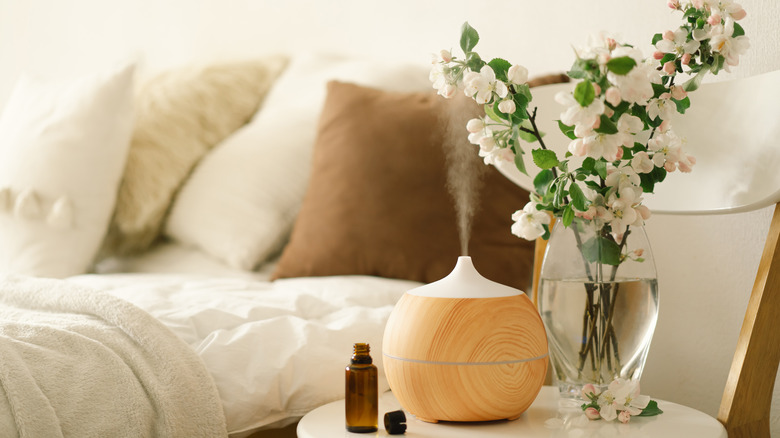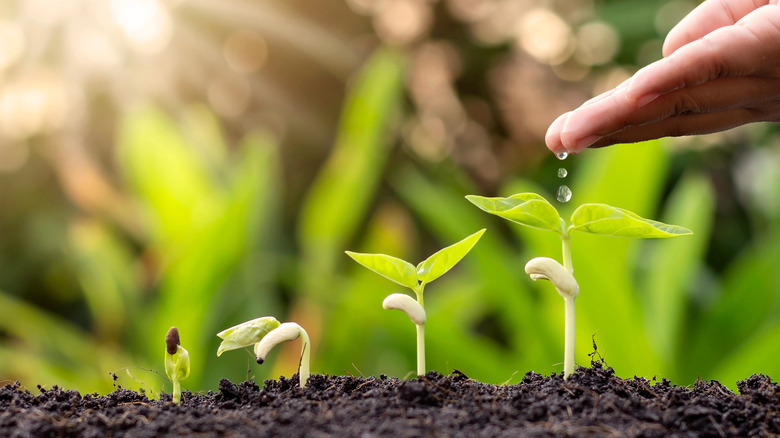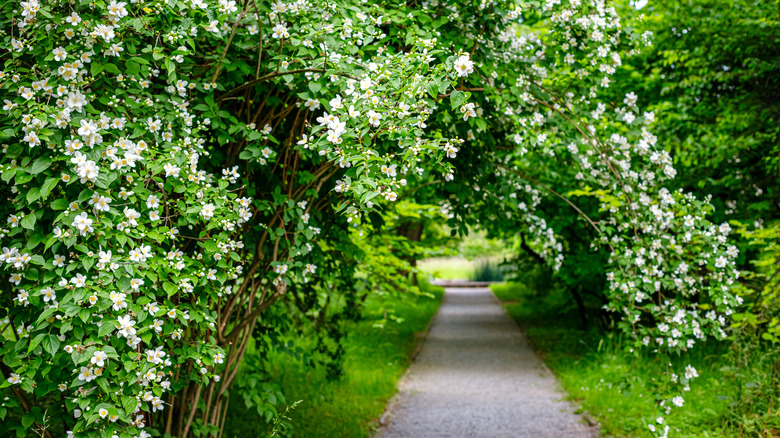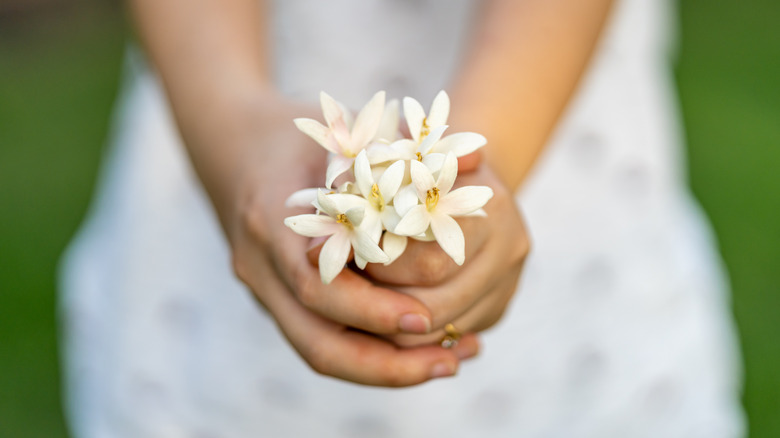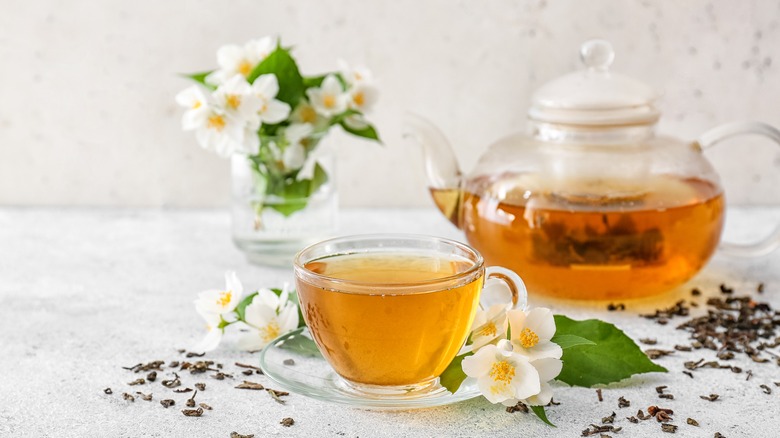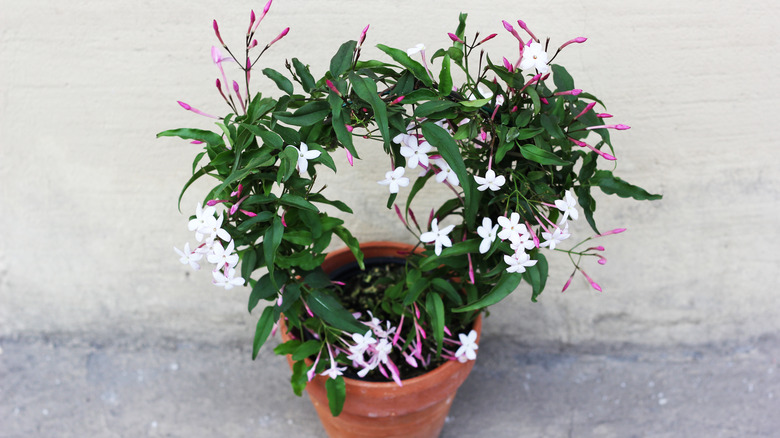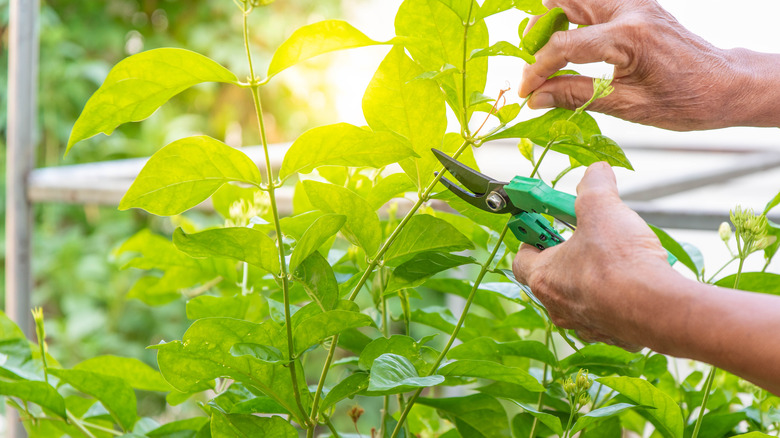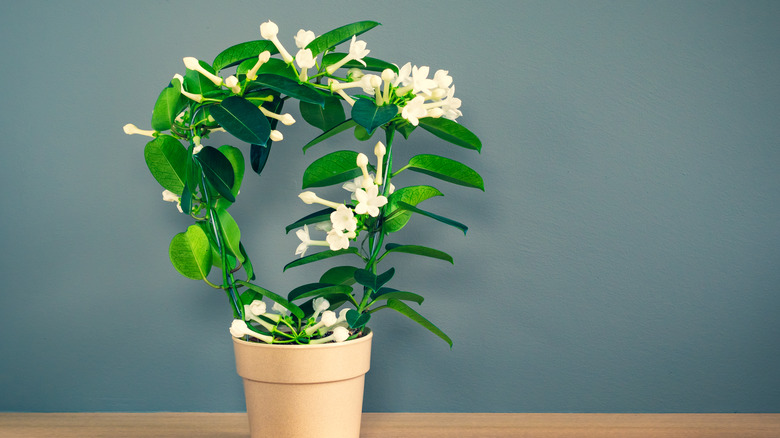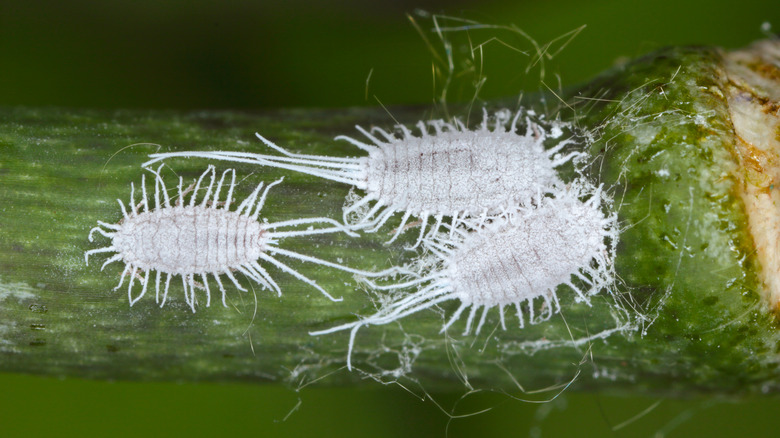How To Successfully Grow Jasmine Plants
Recognizable by their sweet, unforgettable scent, jasmine (Jasminum) can be a delectable new addition to your home or garden, lighting it up with both beauty and exotic scents. Jasmine originated from the Himalayan and moderate regions of China. Their strong, delectable scent grew their popularity to the point that they were then traded and spread across the world. According to The Joy of Plants, there are now over 200 species of jasmine plants, but the very first species is known as Arabian Jazmin (Jasminum sambac). The name jasmine was given to the flower meaning "gift from God" and symbolizes purity, simplicity, modesty, and strength.
As the flower gained popularity for its famous scent, many industries ignited with its products. Garden Guides mentions that the French used the scent to make perfume, which is still a vital industry for the French people today. Other edible forms of jasmine can be made into teas. The Chinese specifically began scenting many of their green teas with jasmine, as it was also believed to help with headaches, insomnia, and bone pain. Today, jasmine can be found in many products beyond perfumes and teas, scenting candles and even garnishing delectable pastries (per Clemson Cooperative Extension). Although growing jasmine can take a bit of work, it is certainly an aromatic gem you can add to your home.
How to use jasmine plants in garden
Jasmine plants have a way of adding a unique touch to your garden. Their natural climbing vines can give your garden a fuller look as they spread their foliage and beautiful flowers across structures. EHow Garden's YouTube channel states that with the help of a trellis, your jasmine plant can spread across blank walls, cover your fence, or even make a cute arch over the entrance of your garden.
Adding jasmine to your yard is also rewarding thanks to the elegant aroma they produce. Jasmine aromas are known for relieving stress and promoting relaxation. They also naturally purify the air around them, (per Balcony Garden Web). Placing jasmine inside your home can freshen up your house naturally while creating a relaxing environment for yourself and guests.
Having jasmine in your garden can also freshen up the outside areas of your home and make a calming space when the weather is nice. If you place jasmine in your garden, consider placing a seating area or hammock near that area to enjoy all the benefits that comes with growing jasmine.
How to grow jasmine plants
To grow your jasmine plant, Gilmour suggests planting between the months of June and November in an area that receives full to partial sun. Also ensure that your jasmine plant has at least 8 feet of growing space, allowing room for extra root growth and proper circulation. Plant your jasmine plant level with the rest of your garden in fertile, consistently moist soil. Because jasmine plants are vining plants, they are inclined to climb; therefore, have structures nearby to assist their growth.
Propagating a jasmine plant can occur via a seed or cutting. Gardening Know How recommends starting seeds indoors three months before planting season. Soak the seeds in water for 24 hours before planting them into a six-cell seed tray with moistened soil. Cover the tray with plastic, retaining its moisture, then place into direct sunlight. Don't repot the plant until two pairs of true leaves sprout. Continue indoor plant growth for one month before placing outside.
Cuttings should be 6 inches long and taken from a healthy tip of the plant. Clip off the end of the cutting and dip it in hormonal rooting powder before placing it into a damp sand filled planter. Surround the planter in a plastic bag to retain moisture, and keep at 75 degrees out of direct sunlight. When roots begin to develop, transfer the plant to potting soil, then wait for the roots to strengthen before bringing the plant outside.
How to care for jasmine plants
Jasmine is not a difficult plant to care for but does take some effort in the beginning stages of its life in your garden. Jasmine planted outside in your garden, must have consistently moist, but not soggy, soil; therefore, plan to water these plants at least once a week. If they are in a planter or you live in a rather hot climate, plan to water several times more per week. Gilmour explains that when the first inch of soil around your jasmine plant is dry, it needs to be watered. When it comes to sunlight, your species of jasmine may need more or less sun throughout the day. Plan to provide full to partial sun to whichever jasmine species you grow.
When choosing a fertilizer to assist the growth of your jasmine plant, Garden Lovers Club recommends fertilizers that are rich in potassium and phosphorus. These ingredients help extends the plant's blooming period. You might also want to consider training your jasmine if you want them to add foliage by allowing your plant to climb structures in your garden. You can begin training a jasmine right after planting by weaving young stems through sections of your structure or by gently and loosely tying them to the structure for support. Soon enough your jasmine will be climbing your desired structure.
Jasmine varieties
The Spruce mentions that there are over 200 species of jasmine plants. Some plants, however, are called jasmine plants but are not truly related to them. One example of false jasmine is Star Jasmine, also known as Confederate Jasmine, which is a relative of oleander. From the wide range of true jasmine species, you can find the right plant that can bring the exact jasmine features you want to your garden.
If you are looking for a jasmine plant with evergreen foliage, Arabian Jasmine is the species for you. Although Winter Jasmine is deciduous, it is very hardy against cold weather, depending on the environment you live in. If you are looking to add a lot of fragrance to your garden, Royal Jasmine, Arabian Jasmine, Italian Jasmine, and Pink Jasmine are the plants to find (via Leafy Place). If you are looking for the best jasmine plant to climb and bring foliage to your outdoor structures, Pink Jasmine is best chosen for the task. With the wide range of jasmine to choose from, all your garden wishes can come true.
Are jasmine plants toxic?
We know that jasmine is commonly used for a variety of scents, teas and even medicine. That must mean jasmine is safe for consumption, correct? Not exactly. According to Kitchn, there is only one jasmine species that is actually edible to humans, which is Arabian jasmine (Jasminum sambac). This jasmine species is used in teas and even as garnishes for sweet treats. All other species of jasmine are poisonous to humans. Although Hunker states that ingesting jasmine will not bring any severe symptoms of poisoning, its ingestion is still associated with nausea, diarrhea, and vomiting.
For animals, jasmine is a non-toxic plant; therefore, it is safe to have pets roam through your garden with jasmine present. This includes dogs, cats, and even horses. Keep in mind, however, that if a pet ingests any plant that is not part of their normal diet, indigestion can still occur. This can easily happen with jasmine, but the effects are not dangerous to animals.
How to repot jasmine plants
Jasmine plants commonly grow outside, covering structure with their vines, but they can also be grown as potted plants. SFGate mentions that jasmine usually doesn't need to be repotted more than once every three years, but when the planter starts looking fuller and water drainage is restricted, you might want to consider repotting sooner. Whenever you are ready to repot your jasmine plant, locate a pot one or two sizes larger than the current pot you are using.
Fill the new pot hallway with soil and water the soil until it is damp. Remove the jasmine plant from its pot by tilting the pot and gently lifting the plant out. Examine the root ball for tight or tangled roots. The roots should be loose for good circulation; therefore, trim or peel layers off the roots that may cause restrictions. Place the plant in the new pot, ensuring the plant is centered and the roots are 1 inch away from the rim of the new pot. Add or remove soil from the bottom of the pot to adjust the height of the plant. Once the jasmine plant is in the right position, fill in the rest of the pot with soil, leaving 1 inch of space between the soil and the top of the pot. When finished, thoroughly water and provide moisture to the plant as it settles. Finally, place the plant in a spot that receives full to partial sun.
How to prune jasmine plants
When it comes to jasmine plants, they are not discouraged by regularly being cut back. In fact, pruning helps the plant remain dense and healthy, as well as heightens its bloom and abundance or flowers. Nature Garden recommends maintaining your jasmine plant regularly by cleaning away dead branches and leaves. Every two to three years you should reshape your bush to the tight yet dense shape you want it to be.
Pruning should be done after the flowering of the jasmine plant. When pruning, think about the direction you want your plant to grow. Start by clearing away dead and diseased parts of the plant, as well as tangled and old stems that no longer produce flowers. The clearing of these portions stimulates new and healthy growth. To control the direction of your plant, prune away branches that are growing away from their support structure, always cutting right above a leaf stem. Also, always prune away branches that grow beyond the structure on which you want them to grow (per Gardening Know How). Pruning these areas annually can significantly improve the look and shape of your climbing plant.
Jasmine as a houseplant
Although jasmine plants are most often seen in an outside garden scene, there are some species that make great houseplants as well. Almanac recommends placing indoor jasmine plants in a sunny spot within your home, preferably at a south window. This encourages healthy and strong growth. The air around the plant must also stay cool and well circulated, between 60 and 75 degree Fahrenheit. Because indoor jasmine plants tend to be vigorous climbers it would be best to add an indoor trellis or other plant climbing object that can support the growth of the plant. Teaching plants to climb these structures, however, takes training similar to outdoor jasmine plants.
Fertilization and healthy soil is also important to the health of your indoor jasmine plant. The soil mixture of the plant should remain moist, not soggy, year-round. It is best to water your indoor plant several times per week to retain the moisture the plant needs. The period following the blooming season, however, is when less water is needed for the plant to grow. Gardening Know How further recommends using fertilizer to assist the indoor growth of your plant. High phosphorus fertilizers are highly recommended for jasmine plants as they transition into their blooming season because they have the ability to lengthen the blooming period of the plant.
Common problems with jasmine plants
Most species of jasmine are fortunately problem free. Pests and diseases, however, can still strike at any moment. Almanac mentions that some species of jasmine are highly susceptible to spider mite infestations. Spider mites are small red, oval-shaped bugs that suck out plant moisture by piercing leaf tissue, ultimately destroying the plant (per the Plant Natural Research Center). If this is the case for your jasmine plant, cut the plant to the ground after it is finished blooming. Throw-out the infested parts of the plant, then continue feeding the plant to stimulate regrowth. Indoor jasmine plants are known for attracting mealybugs, which are identified as the masses of white, cottony substances that develop under leaves and stems. These, however, can be quickly and easily removed with a cotton swab and rubbing alcohol.
Rust is one disease known for disfiguring jasmine plants. According to Garden Guides, rust is a fungal disease that can affect any part of the plant. This fungus is bright orange and red, making it very easy to spot. Through this disease, foliage and buds will turning brown, eventually shriveling up and falling to the ground. To prevent rust and a variety of other diseases from effecting your jasmine plants, always ensure your plants are being watered in a controlled manner, and have proper circulation and well-draining soil. This prevents the build-up of moisture, which is needed for fungal diseases to attack.
